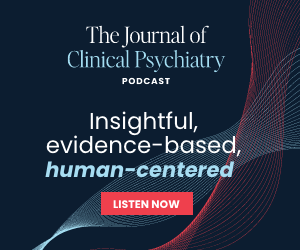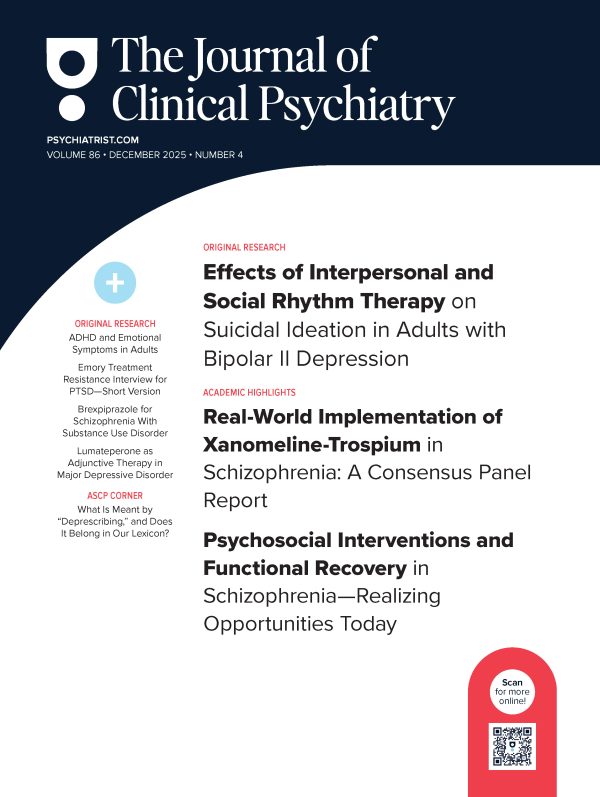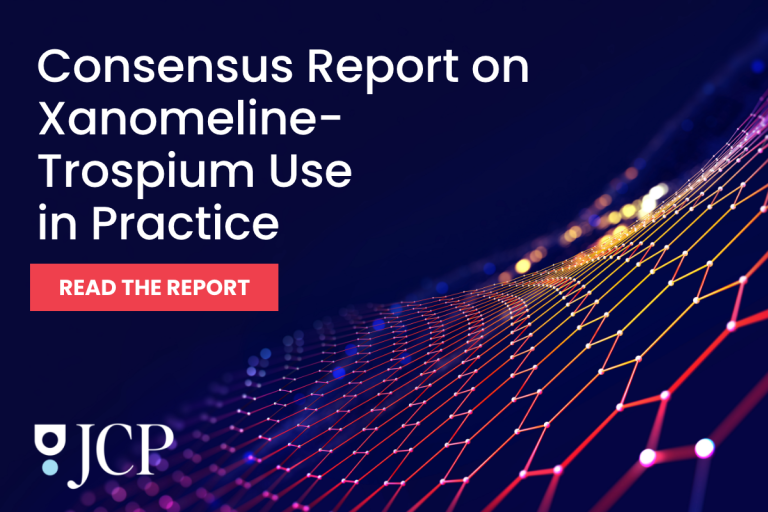ABSTRACT
Background: Etiologic differences between bipolar I disorder (BD-I) and bipolar II disorder (BD-II) have been challenged recently, and family epidemiologic studies may elucidate the matter. Nevertheless, it remains unclear whether BD-I and BD-II display different familial aggregation patterns within each bipolar disorder subtype and coaggregation with other psychiatric disorders.
Method: Per the Taiwan National Health Insurance Research Database (N = 23,258,175), patients with bipolar disorder were classified as having BD-I or BD-II based on the history of psychiatric hospitalization for a manic episode. During the study period (2001–2011), 184,958 first-degree relatives (FDRs) of patients with BD-I and BD-II were identified. By comparing patients with 1:4 age-, sex-, and kinship-matched samples without BD-I/BD-II probands, the relative risks (RRs) of major psychiatric disorders were estimated.
Results: FDRs of BD-I probands had a significantly higher risk of BD-I than those of BD-II probands (BD-I proband: RR = 15.80 vs BD-II proband: RR = 5.68, P < .001). The risk of BD-II was similar between FDRs of BD-I and BD-II probands (BD-I proband: RR = 6.48 vs BD-II proband: RR = 5.89, P = .1161). Familial aggregation was greater within each BD subtype than among cross-subtypes. Furthermore, FDRs of BD-I probands had an increased risk of schizophrenia (BD-I probands: RR = 5.83 vs BD-II probands: RR = 2.72, P < .001); FDRs of BD-II probands had a higher likelihood of attention-deficit/hyperactivity disorder (BD-II probands: 2.36 vs BD-I probands: 1.93, P = .0009).
Conclusions: The risk of psychiatric disorders is higher among the FDRs of patients with either BD-I or BD-II. Furthermore, the familial specificity of BD-I and BD-II assessed in this study may further the current understanding of etiologic boundaries between bipolar disorder subtypes.
Members Only Content
This full article is available exclusively to Professional tier members. Subscribe now to unlock the HTML version and gain unlimited access to our entire library plus all PDFs. If you’re already a subscriber, please log in below to continue reading.
References (38)

- Vieta E, Suppes T. Bipolar II disorder: arguments for and against a distinct diagnostic entity. Bipolar Disord. 2008;10(1 pt 2):163–178. PubMed CrossRef
- Judd LL, Akiskal HS, Schettler PJ, et al. Psychosocial disability in the course of bipolar I and II disorders: a prospective, comparative, longitudinal study. Arch Gen Psychiatry. 2005;62(12):1322–1330. PubMed CrossRef
- Judd LL, Akiskal HS, Schettler PJ, et al. A prospective investigation of the natural history of the long-term weekly symptomatic status of bipolar II disorder. Arch Gen Psychiatry. 2003;60(3):261–269. PubMed CrossRef
- Vieta E. Bipolar II disorder: frequent, valid, and reliable. Can J Psychiatry. 2019;64(8):541–543. PubMed CrossRef
- Yatham LN, Kennedy SH, Parikh SV, et al. Canadian Network for Mood and Anxiety Treatments (CANMAT) and International Society for Bipolar Disorders (ISBD) 2018 guidelines for the management of patients with bipolar disorder. Bipolar Disord. 2018;20(2):97–170. PubMed CrossRef
- Song J, Bergen SE, Kuja-Halkola R, et al. Bipolar disorder and its relation to major psychiatric disorders: a family-based study in the Swedish population. Bipolar Disord. 2015;17(2):184–193. PubMed CrossRef
- Lin PI, McInnis MG, Potash JB, et al. Clinical correlates and familial aggregation of age at onset in bipolar disorder. Am J Psychiatry. 2006;163(2):240–246. PubMed CrossRef
- McGuffin P, Rijsdijk F, Andrew M, et al. The heritability of bipolar affective disorder and the genetic relationship to unipolar depression. Arch Gen Psychiatry. 2003;60(5):497–502. PubMed CrossRef
- Heun R, Maier W. The distinction of bipolar II disorder from bipolar I and recurrent unipolar depression: results of a controlled family study. Acta Psychiatr Scand. 1993;87(4):279–284. PubMed CrossRef
- Andreasen NC, Rice J, Endicott J, et al. Familial rates of affective disorder: a report from the National Institute of Mental Health Collaborative Study. Arch Gen Psychiatry. 1987;44(5):461–469. PubMed CrossRef
- 11. Coryell W, Endicott J, Reich T, et al. A family study of bipolar II disorder. Br J Psychiatry. 1984;145(1):49–54. PubMed CrossRef
- Gershon ES, Hamovit J, Guroff JJ, et al. A family study of schizoaffective, bipolar I, bipolar II, unipolar, and normal control probands. Arch Gen Psychiatry. 1982;39(10):1157–1167. PubMed CrossRef
- Merikangas KR, Cui L, Heaton L, et al. Independence of familial transmission of mania and depression: results of the NIMH family study of affective spectrum disorders. Mol Psychiatry. 2014;19(2):214–219. PubMed CrossRef
- Vandeleur CL, Merikangas KR, Strippoli MP, et al. Specificity of psychosis, mania and major depression in a contemporary family study. Mol Psychiatry. 2014;19(2):209–213. PubMed CrossRef
- Song J, Kuja-Halkola R, Sjölander A, et al. Specificity in etiology of subtypes of bipolar disorder: evidence from a Swedish population-based family study. Biol Psychiatry. 2018;84(11):810–816. PubMed CrossRef
- Chen MH, Hsu JW, Huang KL, et al. Risk and coaggregation of major psychiatric disorders among first-degree relatives of patients with bipolar disorder: a nationwide population-based study. Psychol Med. 2019;49(14):2397–2404. PubMed CrossRef
- van Hulzen KJE, Scholz CJ, Franke B, et al; PGC ADHD Working Group; PGC Bipolar Disorder Working Group. Genetic overlap between attention-deficit/hyperactivity disorder and bipolar disorder: evidence from genome-wide association study meta-analysis. Biol Psychiatry. 2017;82(9):634–641. PubMed CrossRef
- Lee SH, Ripke S, Neale BM, et al; Cross-Disorder Group of the Psychiatric Genomics Consortium; International Inflammatory Bowel Disease Genetics Consortium (IIBDGC). Genetic relationship between five psychiatric disorders estimated from genome-wide SNPs. Nat Genet. 2013;45(9):984–994. PubMed CrossRef
- Cross-Disorder Group of the Psychiatric Genomics Consortium. Identification of risk loci with shared effects on five major psychiatric disorders: a genome-wide analysis. Lancet. 2013;381(9875):1371–1379. PubMed CrossRef
- Malhi GS, Outhred T, Irwin L. Bipolar II disorder is a myth. Can J Psychiatry. 2019;64(8):531–536. PubMed
- Malhi GS, Irwin L, Outhred T. Counting the days from bipolar II to bipolar true! Acta Psychiatr Scand. 2019;139(3):211–213. PubMed CrossRef
- Cheng CM, Chang WH, Chen MH, et al. Co-aggregation of major psychiatric disorders in individuals with first-degree relatives with schizophrenia: a nationwide population-based study. Mol Psychiatry. 2018;23(8):1756–1763. PubMed CrossRef
- Kuo CF, Grainge MJ, Valdes AM, et al. Familial aggregation of systemic lupus erythematosus and coaggregation of autoimmune diseases in affected families. JAMA Intern Med. 2015;175(9):1518–1526. PubMed CrossRef
- Liang CS, Bai YM, Hsu JW, et al. The risk of sexually transmitted infections following first-episode schizophrenia among adolescents and young adults: a cohort study of 220 545 subjects. Schizophr Bull. 2020;46(4):795–803. PubMed CrossRef
- Huang MH, Cheng CM, Tsai SJ, et al. Familial coaggregation of major psychiatric disorders among first-degree relatives of patients with obsessive-compulsive disorder: a nationwide study. Psychol Med. 2021;51(4):680–687. PubMed CrossRef
- Tsai CF, Chen MH, Wang YP, et al. Proton pump inhibitors increase risk for hepatic encephalopathy in patients with cirrhosis in a population study. Gastroenterology. 2017;152(1):134–141. PubMed CrossRef
- Yelland LN, Salter AB, Ryan P. Performance of the modified Poisson regression approach for estimating relative risks from clustered prospective data. Am J Epidemiol. 2011;174(8):984–992. PubMed CrossRef
- Zou G. A modified poisson regression approach to prospective studies with binary data. Am J Epidemiol. 2004;159(7):702–706. PubMed CrossRef
- Charney AW, Ruderfer DM, Stahl EA, et al. Evidence for genetic heterogeneity between clinical subtypes of bipolar disorder. Transl Psychiatry. 2017;7(1):e993. PubMed CrossRef
- Stahl EA, Breen G, Forstner AJ, et al; eQTLGen Consortium; BIOS Consortium; Bipolar Disorder Working Group of the Psychiatric Genomics Consortium. Genome-wide association study identifies 30 loci associated with bipolar disorder. Nat Genet. 2019;51(5):793–803. PubMed CrossRef
- Kao CF, Chen HW, Chen HC, et al. Identification of susceptible loci and enriched pathways for bipolar ii disorder using genome-wide association studies. Int J Neuropsychopharmacol. 2016;19(12):pyw064. PubMed CrossRef
- Hamidian S, Pourshahbaz A, Bozorgmehr A, et al. How obsessive-compulsive and bipolar disorders meet each other? an integrative gene-based enrichment approach. Ann Gen Psychiatry. 2020;19(1):31. PubMed CrossRef
- Chen MH, Pan TL, Huang KL, et al. Coaggregation of major psychiatric disorders in first-degree relatives of individuals with attention-deficit/hyperactivity disorder: a nationwide population-based study. J Clin Psychiatry. 2019;80(3):18m12371. PubMed CrossRef
- Larsson H, Rydén E, Boman M, et al. Risk of bipolar disorder and schizophrenia in relatives of people with attention-deficit hyperactivity disorder. Br J Psychiatry. 2013;203(2):103–106. PubMed CrossRef
- Landaas ET, Johansson S, Halmøy A, et al. Bipolar disorder risk alleles in adult ADHD patients. Genes Brain Behav. 2011;10(4):418–423. PubMed CrossRef
- Plana-Ripoll O, Pedersen CB, Holtz Y, et al. Exploring comorbidity within mental disorders among a Danish national population. JAMA Psychiatry. 2019;76(3):259–270. PubMed CrossRef
- Ikeda M, Takahashi A, Kamatani Y, et al. A genome-wide association study identifies two novel susceptibility loci and trans population polygenicity associated with bipolar disorder. Mol Psychiatry. 2018;23(3):639–647. PubMed CrossRef
- Phillips ML, Kupfer DJ. Bipolar disorder diagnosis: challenges and future directions. Lancet. 2013;381(9878):1663–1671. PubMed CrossRef





